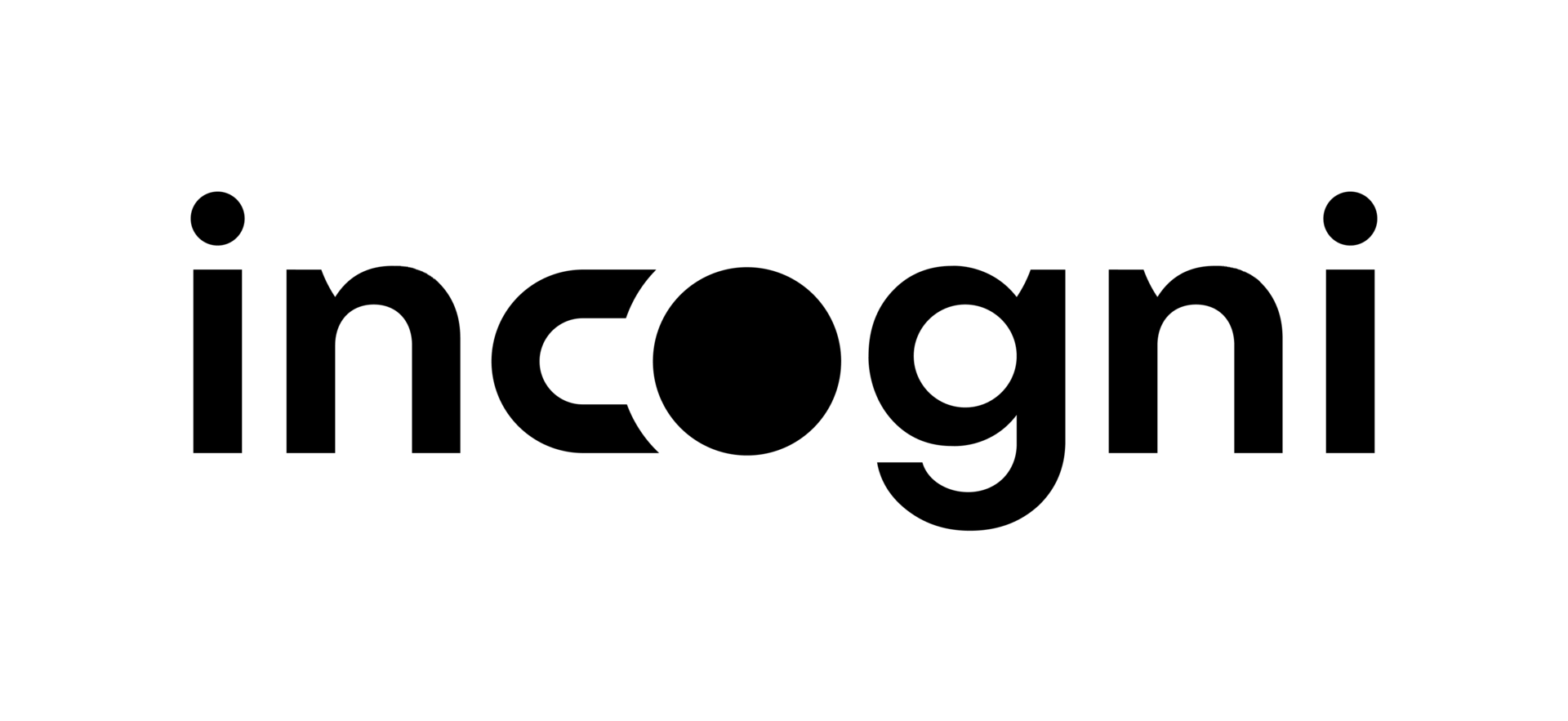In partnership with


75,000 miles
That’s the average distance an adult will walk during their lifetime — the equivalent of traveling around the world three times.

The AI debt boom gets its first stress test
China’s youth market has turned its back on American brands
Is college still worth it in this economy?
Newsletter Exclusive: Disney is no longer a kids company
What Spooked Wall Street After Nvidia’s Blowout Quarter
Heading into Nvidia’s earnings last week, the S&P 500 was on track for its worst November since 2008. Markets were jittery — not because AI demand materially changed, but because the amount of debt sustaining the boom did.
Big Tech companies issued $75 billion of U.S. investment-grade debt in September and October, more than double the sector’s average annual issuance over the past decade.
Then Nvidia reported record revenue and stronger-than-expected guidance for the fourth quarter, and that anxiety temporarily evaporated. The earnings lifted Nvidia 5% and the entire Nasdaq 2%.
But the rally was short-lived. By noon the next day, Nvidia gave up all its gains, as did the rest of the market.
What caused this whiplash? One potential catalyst may have been a forensic accounting analysis that detected several anomalies in Nvidia’s filings hours after their release.
The analysis identified concerning patterns in payment collection and cash generation that fell well below industry norms.
It also highlighted a major discrepancy: Despite CEO Jensen Huang describing “insane” demand and ongoing supply constraints, Nvidia’s inventory increased 32% in a single quarter.
In a true supply shortage, inventory falls because everything ships immediately.
Growing inventory during supposed supply shortages suggests either demand is weaker than claimed, or customers are taking delivery without the ability to pay.
The report also noted that prominent investors, including Peter Thiel and Michael Burry, have either exited their Nvidia positions or taken sizable short bets against the stock.
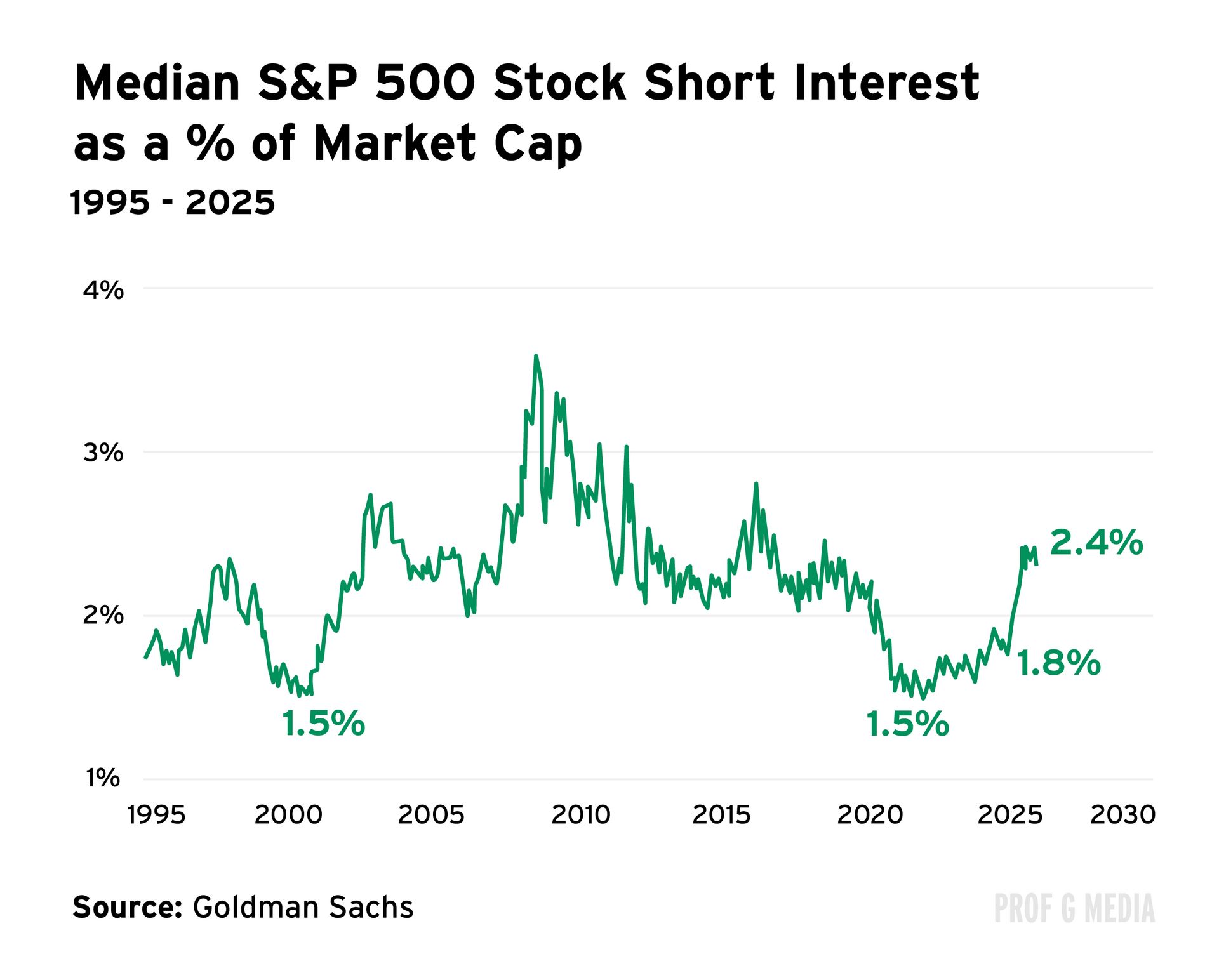
AI is now the largest segment of the market for investment-grade debt.
For Google, Microsoft, Meta, and Amazon, cash flows still appear strong enough to support their borrowing.
According to Goldman Sachs, these stocks are among the five most popular hedge fund long positions.
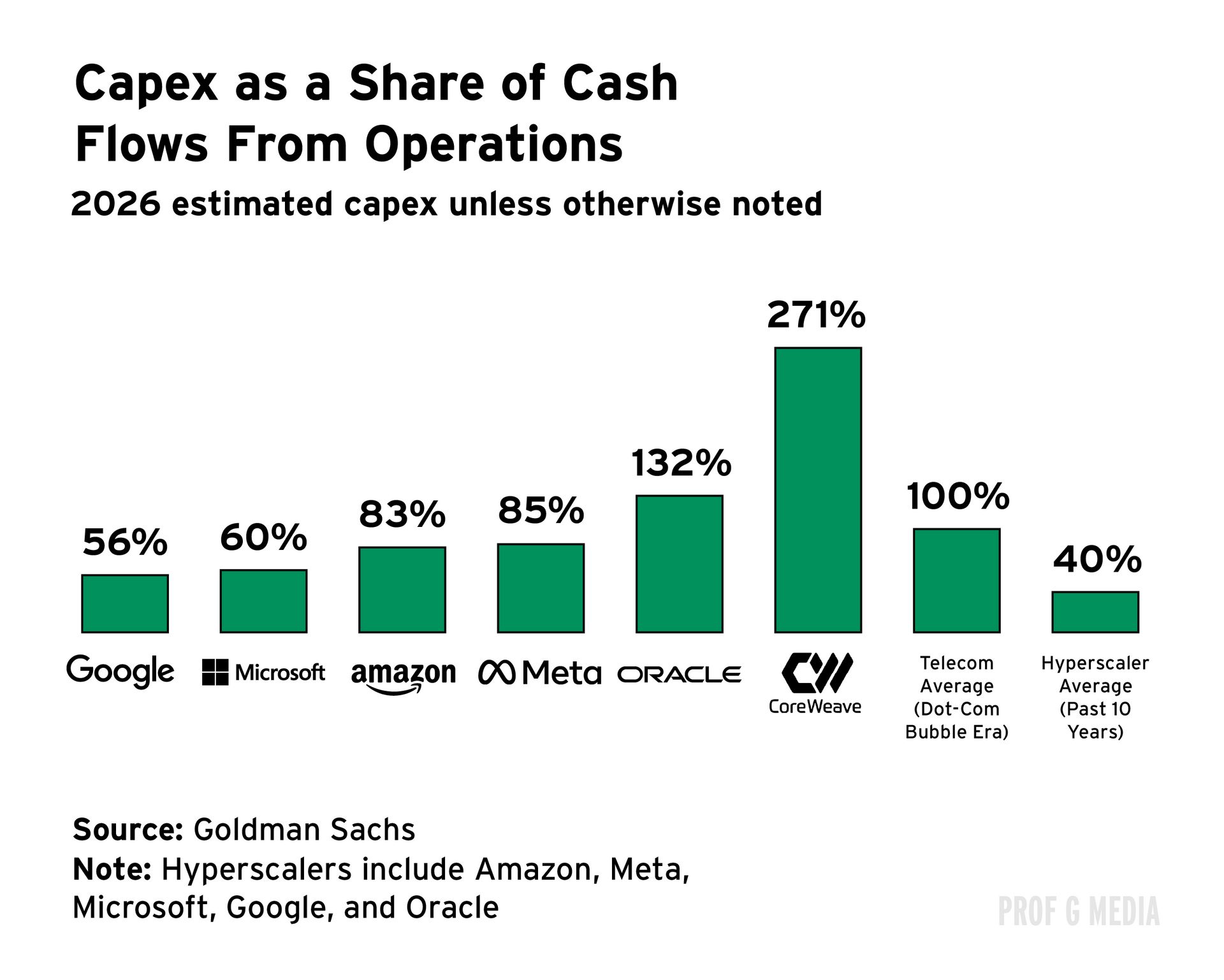
The risk profile changes drastically outside the Big Four.
Oracle’s capex is expected to reach over 130% of its operating cash flow next year, and it doesn’t expect to return to profitability until 2030. Plus, roughly 60% of its contract backlog is tied to OpenAI.
The price to protect against Oracle defaulting on its debt has tripled in recent months.
CoreWeave is in an even riskier position. It has more than $14 billion in debt on about $5 billion in revenue, with another $14 billion in capex planned this year and $34 billion in lease obligations through 2028.
Without a major jump in revenue, it may need to borrow more or renegotiate with creditors to cover its obligations.
The broader risk isn’t the size of the debt load — it’s the assumption that demand will keep rising fast enough to support it. The Nvidia report was the clearest signal yet that this assumption has limits.

The scary thing here isn’t the individual performance of these companies. It’s that our economy has become much more fragile.
Diversification makes an economy robust. The reason why Russia’s economy is so fragile is if Ukraine takes out more of their oil refining capability, they’re not selling rare earth materials or cars or soybeans or movies about men in tights with capes. They don’t have any other industry. Our economy used to be diverse, but it’s becoming more and more dependent on AI and the wealthiest cohort of Americans.
If Nvidia drops 60% or 70%, which is what most high-flying stocks eventually do, there will be massive destruction across the entire market.
If the stock market takes a hit, the top 10% of Americans who base their confidence entirely on the market could cut their spending by 20% to 30%. And since they’re responsible for half of all consumer spending, that would tank the entire economy.
Made in China: Now a Status Symbol?
Rising national pride in China is reshaping consumer behavior, pushing shoppers away from U.S. brands and toward homegrown alternatives.
Tesla’s market share has collapsed to 3%, down from 16% in 2020. Nike is no longer the market leader in athletic wear. Gucci’s online bag sales in China have dropped more than 50% compared with two years ago. The iconic American brands that once dominated China are now in retreat.
At the forefront of this reversal is a Gen Z movement called Guochao, or “national tide.” It represents a fundamental reimagining of what “Made in China” means. For decades, that label signified cheap, low-quality products. Now, young Chinese consumers are reclaiming it, challenging Western cultural dominance and the assumption that foreign brands are inherently superior.
China’s 280 million Gen Z consumers came of age during their country’s economic boom. They don’t see China as “catching up” to the West; they see it as an equal. They also grew up during the Trump-era trade wars, when Western criticism and hostility toward China became a defining backdrop.
This cultural shift has economic implications. U.S. firms generated $1.2 trillion in revenue selling to Chinese consumers last year. China drives roughly 15% of Nike’s sales, nearly 20% of Apple’s, 37% of Tesla’s deliveries, and almost half of Qualcomm’s revenue.

When I started L2 in 2010 and we worked with the beauty company Estée Lauder, they used to joke that the moment the ship docked in Hong Kong Harbour, the product was sold. If you went back 13 years and listened to an earnings call of Estée Lauder or LVMH, they just said China over and over and over. Now that’s over.
Young people in China have decided America’s not in vogue anymore. Part of that is rising anti-American sentiment; part of it is that domestic innovation has caught up. They don’t have Apple, but they have Xiaomi. They don’t have Tesla, but they have BYD. They don’t have Nike, but they have Li-Ning and Anta.
China used to be terrible at branding, but that’s changing. For the first time, young consumers feel they don’t need Western brands to signal taste or status. They have credible local alternatives.
Young people in China hate America. Young Americans hate America. We’re clearly not doing something right.

Let me give you some market share statistics on what’s happened in China, because they tell a story that should concern every investor with exposure to these companies.
Nike had 25% market share in 2019 and was the market leader in China. Today, Nike is down to 20% market share, and the new market leader is a company called Anta with 23% market share.
In 2019, Starbucks had 34% market share; now it’s down to 14%. The new leader is Luckin Coffee, a Chinese company. And as of early November, Starbucks is selling 60% of its China business to a Chinese private equity firm.
Tesla’s market share shrank to 3% today from 16% in 2020. Now, BYD is the market leader with 23% market share.
McDonald’s was the largest fast-food chain by restaurant locations. No longer. It’s now a Chinese company called Mixue, specializing in 15 cent ice cream and $1 drinks.
Why is this happening? I’m inclined to believe it was probably Trump. Chinese state media dramatically ramped up anti-American rhetoric during the first Trump era, creating criticism that shaped public perception.
During 2019 and 2020, Chinese state media published an editorial highlighting America’s poor values and national decline once every 3.4 days.

____________sponsored content ____________
Stop strangers from finding you online
Truth is, with just a simple Google search, anyone can find out where you live. Whether it's a stalker or scammer, or even selling your data, your personal info is out there, and that’s just scary. Every day, more of your information is collected, shared, and exposed without your knowledge.
But there’s a way to fight back: Incogni. It doesn’t just remove your name from Google results. Incogni works quietly in the background to wipe your personal data from people-search sites, data brokers, and hidden databases you may not even know exist.
Here's what people have to say about Incogni:
"I was getting literally 10 spam calls per day on my new cell phone number. Incogni scrubbed my data and after 4-5 weeks the calls literally stopped like they hit a brick wall!" — Jamey
Your personal data is being collected and sold every time you go online. Take action now to protect your privacy.
____________sponsored content ____________
College Grads Face the Worst Job Market Since COVID
The job market for recent college graduates is deteriorating rapidly. Companies are warning that 2026 could be the toughest job market for college grads since the pandemic, and over the summer, unemployment for degree holders ages 22 to 27 hit its highest level in over a decade (excluding COVID).
Unemployment for new college grads is 9.3%, double the national unemployment rate and worse than the rates in the struggling economies of Turkey and Latvia.
Mass layoffs are sweeping through tech and other white-collar industries, with AI threatening entry-level positions that traditionally went to recent graduates. Postings for entry-level jobs in the U.S. have declined 35% since January 2023, and Handshake, a job platform for college students, reports that each listing is now getting 26% more applicants.
This disconnect between an expensive degree and gainful employment calls into question the real benefit of college.

Is college still worth it?
A lot of it is situational. If you don’t have a lot of money, and you have to borrow a lot to go to a second-tier school, I think you really have to be careful and evaluate your other options.
If you get into Yale and feel like there’s a very decent likelihood you’ll graduate, I’d say it may even be worth taking a quarter of a million dollars out in debt.
What I generally find is the people saying you don’t need college are people who have graduate degrees from Stanford and it’s worked out pretty well for them.
Here’s the bottom line: Median annual earnings for people with a bachelor’s degree are 59% higher than those who only graduate from high school.
And it’s not just about money. Americans with a four-year college degree have a life expectancy that is six years longer than those without a degree, and have a divorce rate of 26% vs. 39% for those with only a high school diploma.
The problem is, we’ve decided to create artificial scarcity such that we can raise tuition prices 2x to 3x faster than inflation, creating a caste system that disadvantages poor kids.
So what should you do? If you would benefit from college, get into as many schools as possible, then play them off each other for financial aid. Competition brings down prices.
You can also consider doing two years at a community college, and then transferring. The big public schools do a good job of taking kids in who are transfers from junior college.

Where you go to school is largely a branding decision. When you’re thinking about where to go to college, you should think about which college most people recognize. It’s stupid and it’s unfair, but that is what it is. If you don’t get into a college that holds real brand value, then you probably shouldn’t be taking out debt to go there.
For example, ~93% of Yale graduates were employed or in grad school within six months of graduating, while the overall employment rate for class of 2024 was 61%.
The other thing that makes college worth it is the connections. It’s the relationships that are established over the course of your time at college.
Some data that supports this argument: 70% to 85% of jobs are filled via networking. If you get a referral to a job, meaning you know someone, you are 4x more likely to get hired. So if you’re worried about the job market and not getting hired, you should try and get to know a lot of people who will go to bat for you.
And this is the final stat: A Gallup poll found that more than half of grads who are in a frat or sorority have a job immediately after graduation. For unaffiliated grads, that number drops down to a third. In other words, if you have friends, if you’re in a community like a fraternity, you are more likely to have a job after college.
Newsletter Exclusive: Disney Is No Longer a Kids Company
Disney built a kingdom for kids — yet it’s now adults who are sustaining its middling performance.
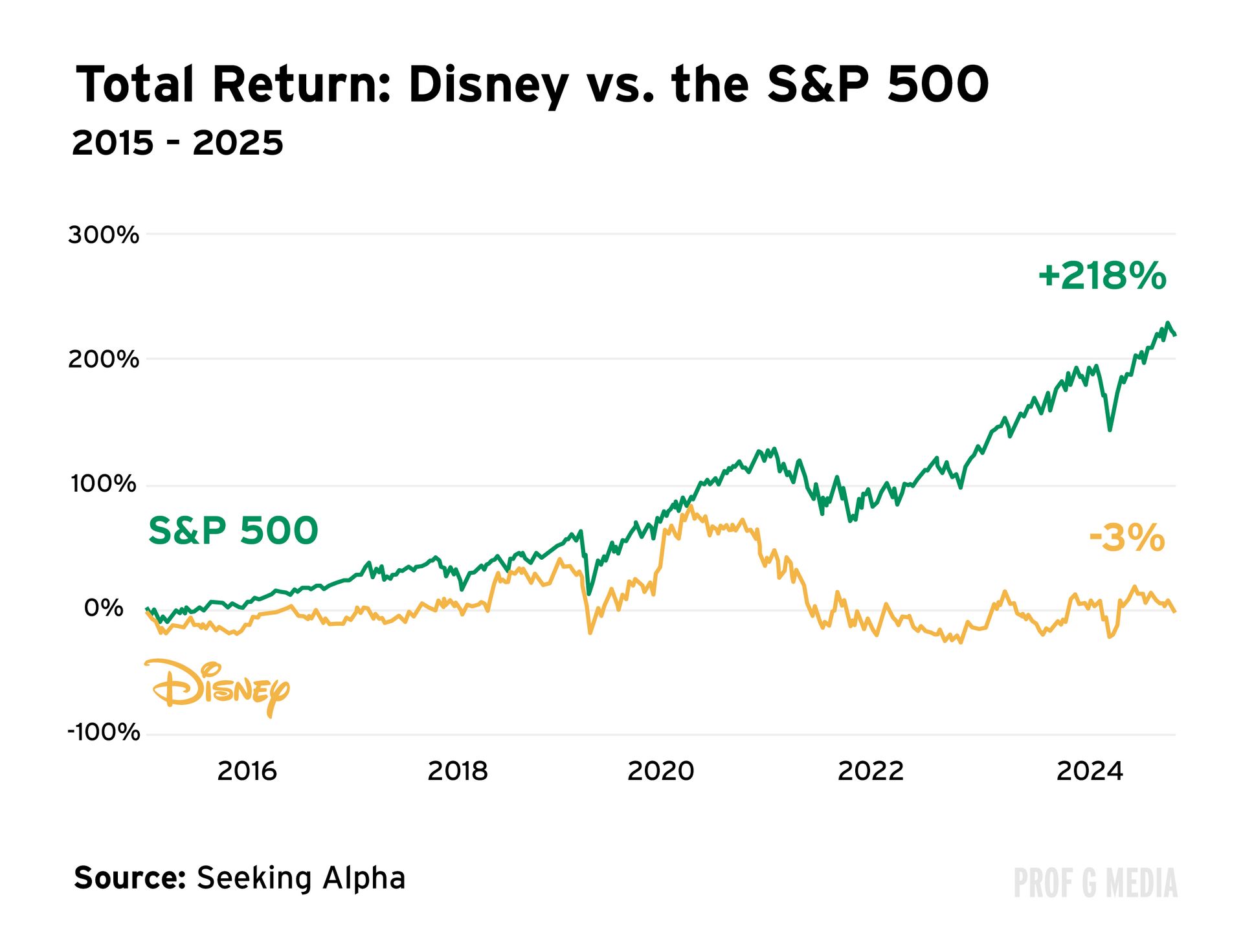
Disney has quietly become a company for grown-ups. Over 60% of Disney+ subscribers don’t have children at home, and only 37% of Walt Disney World visitors in 2025 came from households with kids under 18.
Where did the kids go? YouTube.
YouTube was first to double down on short-form videos, perfect for children’s shrinking attention span, while Disney continued to focus on long-form storytelling and its existing franchises.
The Kids Diana Show on YouTube, whose popular videos are between two and seven minutes long, has 137 million subscribers.
Compare that with the Disney Channel, which gets 100,000 daily prime time viewers on average, and Disney+, which has 128 million subscribers.
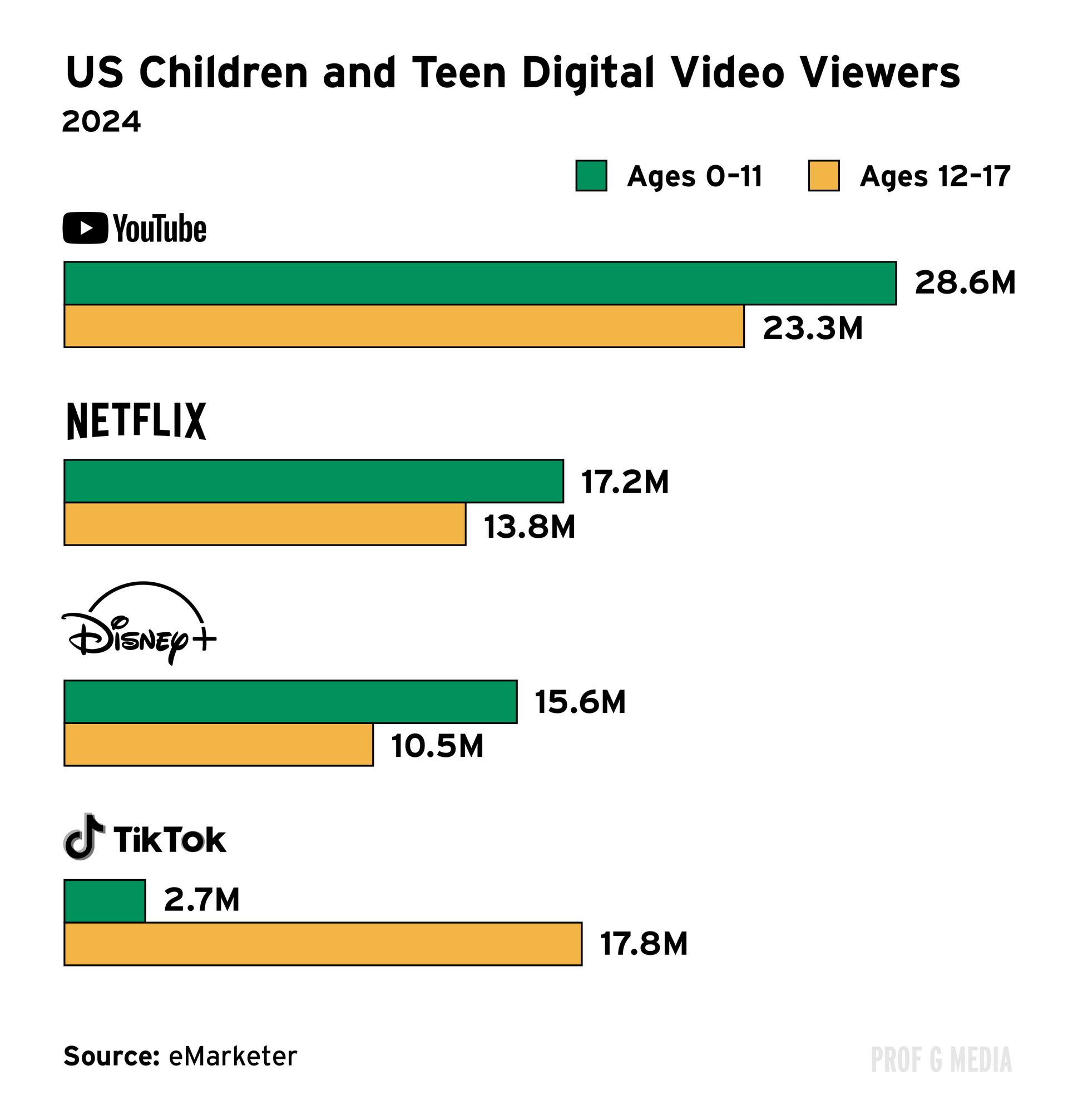
The irony deepens when you consider Disney’s dependence on the very platform stealing its youngest viewers. YouTube TV pays Disney a reported $2 billion annually for the right to carry its channels, roughly 20% of Disney’s entire linear TV business. Disney isn’t just competing with YouTube; it’s also reliant on it.
The company is now scrambling to fight back. Disney announced plans to add more short-form programming to Disney+, launched YouTube Shorts featuring its characters, and has integrated its IP into games like Fortnite. But these moves feel reactive rather than proactive, an attempt to meet kids where they are after realizing the kids had already left.
Meanwhile, Disney has found an alternative audience: adults. Disney adults now drive the majority of spending growth at the company’s theme parks, which generated $10 billion in operating income in 2025, up 8% year over year. The company has even developed Disney retirement communities.
Roughly 70% of Disney adults are between the ages of 25 and 44, 80% are female, and 88% are white. Fifty-eight percent spend between $1,000 and $10,000 annually on Disney experiences and merchandise.
These numbers aren’t mere curiosities; they’re proof of Disney’s new reality. The company that once defined childhood entertainment is now chasing the wallets of grown-ups who don’t want to let their childhoods go. The actual kids have moved on to YouTube.

Sign up for Scott’s 2026 Predictions livestream on December 4.

Want to ask the Prof G team anything? Now’s your chance. For a couple of episodes this December, the Prof G Media team is taking over Office Hours. Drop a question in our Reddit thread or send a voice memo to [email protected]

